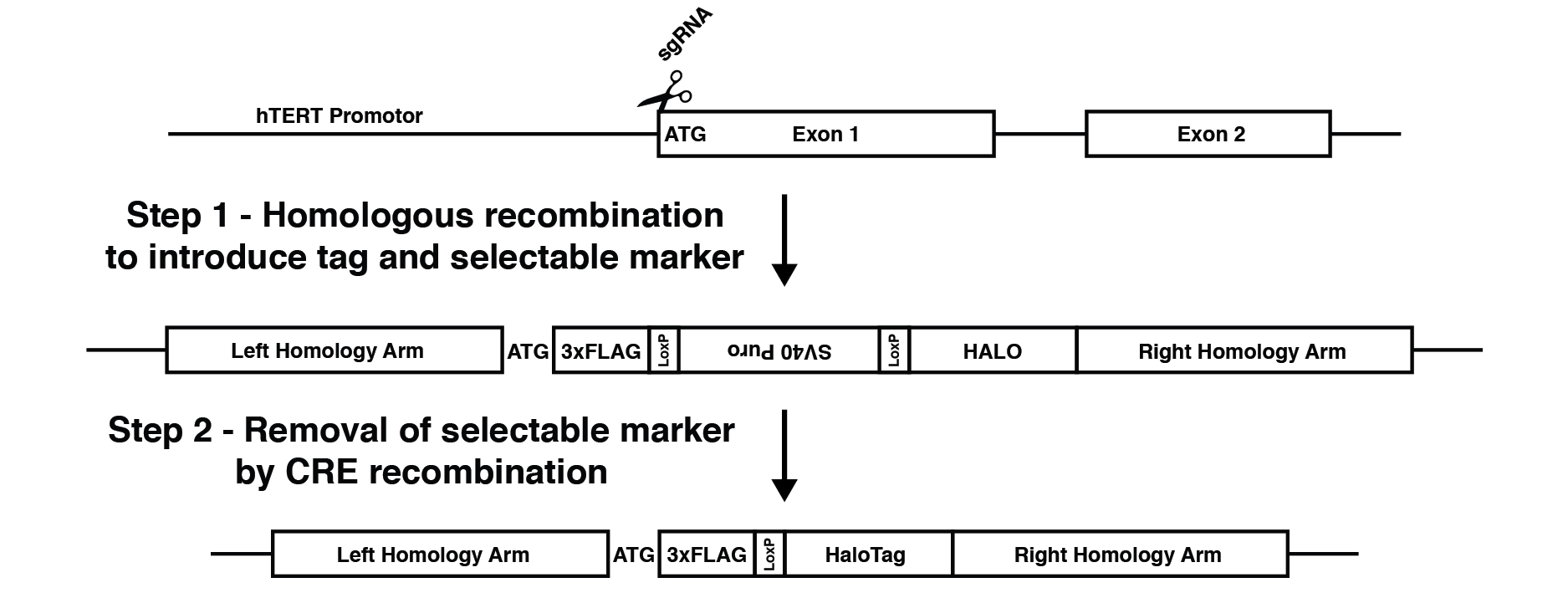Genome Editing
CRISPR/Cas9 mediated genome editing...
... is a powerful technique that allows us to make precise changes in the genome of human cells. Until recently fluorescently tagged proteins were usually expressed by retroviral transduction or transient transfection of plasmid DNA, which frequently leads to over-expression on top of the endogenous protein that the cell is already producing. We use a two-step genome editing strategy to introduce fluorescent tags at the endogenous loci of the proteins that we are interested in studying. In addition to the fluorescent protein, we also include an affinity tag to allow purification of the protein of interest. By modifying the endogenous locus we can achieve expression levels that are similar to the wild type protein and any regulation of the expression of the protein of interest is unchanged since all the regulatory elements around the gene are identical. This is especially important for imaging the trafficking and localization of proteins in the cell, since over-expression often alters the cellular distribution of the respective protein.
In addition to introducing fluorescent tags into the human genome we also use CRISPR/Cas9 technology to knock out target genes or to make specific changes to existing genes, such as point mutations and truncations.
For detailed instructions on how to use CRISPR/Cas9 mediated genome editing, please download Jens's genome editing guide. For any questions or clarifications please email Jens.


